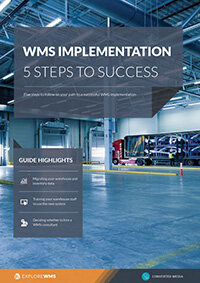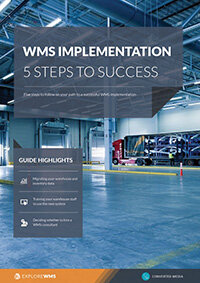Your guide to preparing for WMS implementation
Adopting new warehouse management software is a large undertaking, but it can hold countless benefits for improved productivity, theft deterrence, and revenue increases. Maximizing those ‘wins’ requires an in-depth strategy for WMS implementation. Here are five things you should consider prior to implementation to create the best possible path to success.
Plan it out
A successful WMS implementation starts with a plan for WMS needs, goals, and answers how you plan to achieve those goes with your new WMS software. If the WMS you’ve selected doesn’t provide a path to your goals, it might not be the best fit.
Ensure your WMS implementation project succeeds using our step-by-step guide to WMS implementation
Extensive planning gives you a chance to incorporate your company’s competitive advantages into the equation that any new system you adopt does not harm those benefits. You may also identify WMS software capabilities that can boost your differentiators or improve your ability to communicate effectively with those customers.
Check your software
What WMS software do you have that already works? How many new modules do you need with this upcoming WMS implementation?
Answering those questions can help you minimize the amount of new software you use as well as the customization needs of your business. The more systems you can use off-the-shelf, the more you’ll save on cost and the more resources you’ll have for needed customization in areas like cybersecurity.
This framework can also help you identify areas where your existing software will work with minimal adjustment. Minimize the software you’re replacing and you can adopt a stronger WMS with less need for extensive staff training.
Needing to adjust your software too much to carry out basic operational processes can cause significant WMS implementation delays or failures.
Budget analysis
Start off with a look at your budget and cost/return calculations to ensure you have consistent funding for the lifecycle of your WMS software. Knowing the financial stakes will help you determine how much to spend in order to have an effective investment. A strong ROI on your initial WMS implementation makes it more likely for you to secure funding for the future growth and maintenance that are required for long-term WMS success.
Training
After you understand the needs of your employees and make a WMS software purchase that’s designed to meet those needs, it’s time to train your team on the new system. Put a formal training plan in place before the WMS implementation so that teams are used to learning in that environment.
Only going with on-the-job training leads to missed steps, hunting for proper controls and inputs, and many other activities that kill productivity during the workday.
Testing and understanding of SKUs
Your entire WMS software needs to be tested before you start any implementation. Spend a significant amount of time configuring the platform and setting up your framework so that you can test this properly in business operations.
Test at both the SKU level and the process level, so that you’re able to follow individual items and bulk shipments as they move throughout your warehouse. WMS implementation needs thorough testing to see where gaps may exist, identify areas that need extensive training, and even give you the chance to manage expectations for when your WMS implementation goes live.
Free white paper

WMS implementation guide
Plan your WMS implementation successfully with this comprehensive guide

Featured white papers
-

-

-

WMS implementation guide
Plan your WMS implementation successfully with this comprehensive guide
Download
Related articles
-

How much WMS software costs and how to set your budget
A complete guide to WMS costs, and how to calculate your budget based on these
-

Mission-critical features of food lot traceability software
What features of food traceability software will help you during a food recall
-

WMS implementation guide including checklist & project plan
A guide to the entire WMS implementation process - from change management planning to go-live

